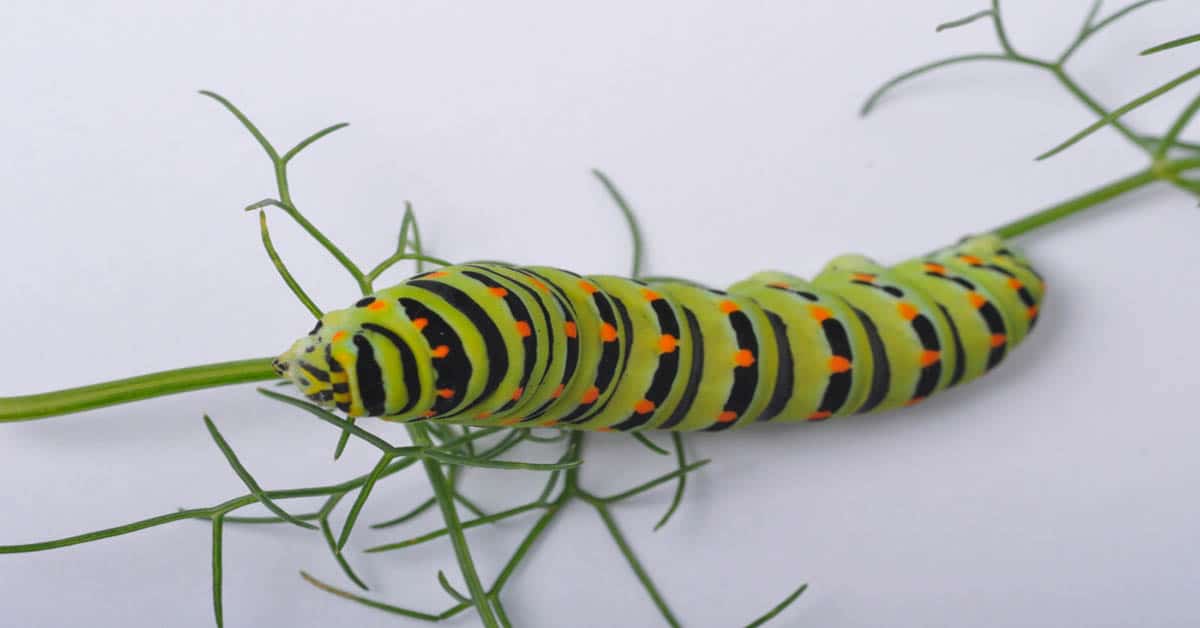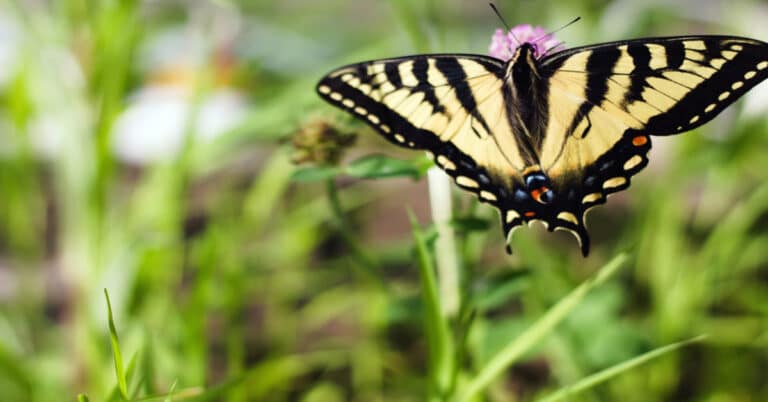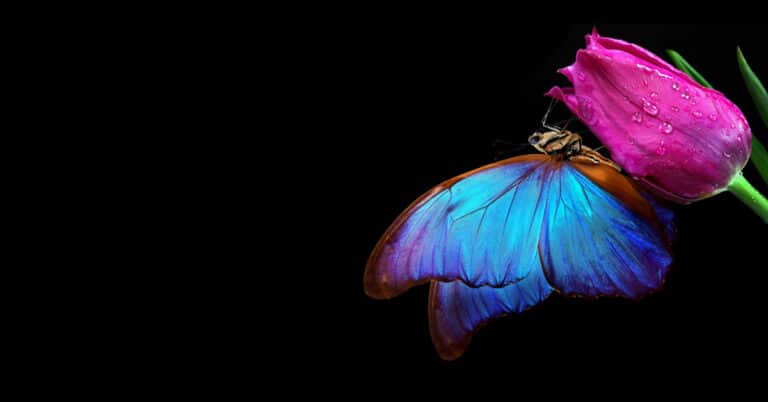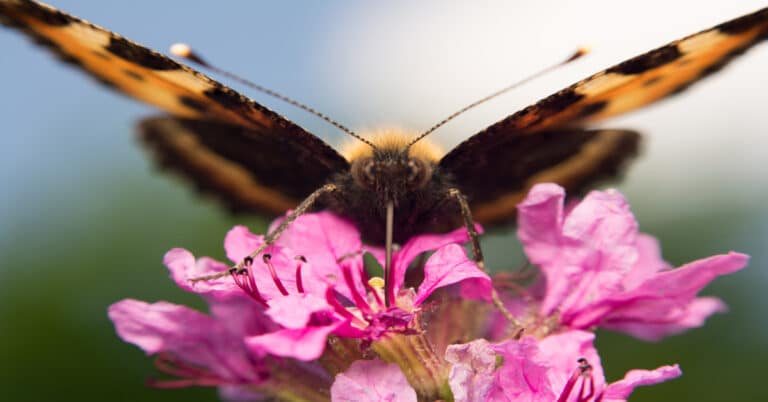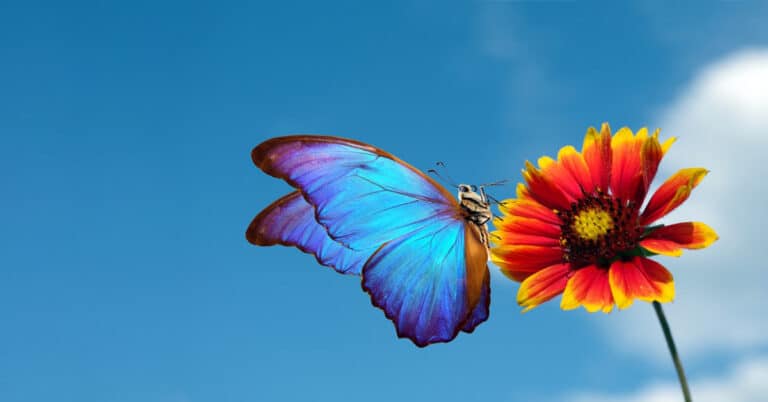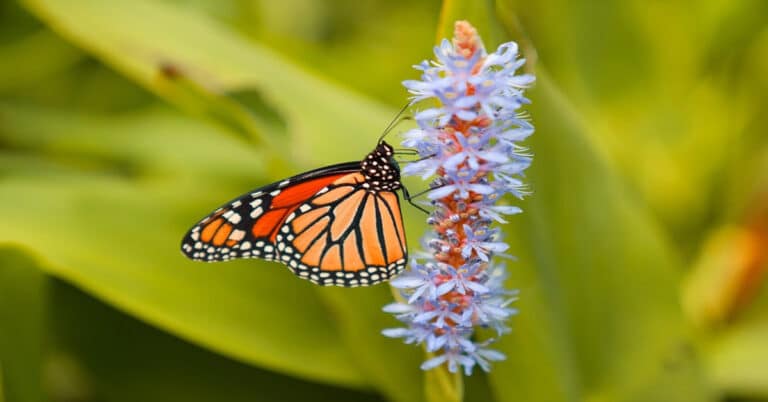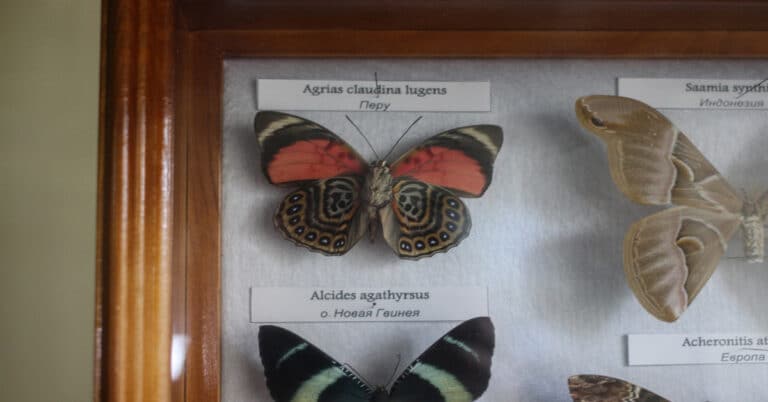Butterfly Larvae – Extraordinary Stage of Butterfly Metamorphosis
During the growth stage, a butterfly goes through a complicated development process called metamorphosis. This word has a Greek origin and translates as a transformation or change. The butterfly’s development and metamorphosis include 4 main stages — egg stage, larvae, pupa, and adult butterfly.
The butterfly larvae are also known as caterpillars. It is believed that there are more than 20,000 species of caterpillars around the world. Those creatures have very recognizable sizes, markings, horns, and colors. Learning about them can be very interesting because of their unique habits and traits.
In this article, we will explore the butterfly larvae and learn more about their eating habits, appearance, threats, and habitats.
What Is Butterfly Larvae?
The second stage of the life cycle of a butterfly is when the egg hatches into a larva, also known as a caterpillar. Eating is a caterpillar’s main activity. They virtually always eat because of their ravenous hunger.
The caterpillar’s body expands significantly as it keeps eating. However, the pretty tough exoskeleton does not grow with the growing caterpillar.
Instead, a process known as molting removes the old exoskeleton and replaces it with a new, bigger exoskeleton. Butterfly caterpillars may go up to 5 molts before entering the pupa stage.
Threats to Butterfly Larvae
Habitat degradation is the main danger to butterfly larvae today. Because of the loss of habitat, many species are currently in grave danger. The growth of residential, commercial, and animal farming areas causes such degradation.
In order for the butterfly larvae to have food after hatching, they often need to lay their eggs on highly particular host plants. Remember that an adult butterfly larva can thrive on a range of nectar sources.
Butterfly larva eaters include:
- Birds
- Rodents
- Monkeys
- Rats
- Snakes
Most butterflies are consumed at various phases of their life cycles, including as eggs, caterpillars, and adult forms. Unfortunately, certain animals may easily discover them. Their stunning, vibrant colors instantly alert predators to their presence.
A caterpillar’s appearance may frequently deter predators. Its patterns and certain body components may give the impression that it is venomous, larger, frightening, or inedible. In fact, some caterpillar species are deadly or repulsive, and their vivid colors alert predators.
While not hazardous themselves, some may imitate deadly creatures. Butterfly larvae can have cryptic coloring and mimic the plants they eat. For example, the Nemoria Arizonaria larva illustrates a caterpillar species that uses camouflage for protection.
When the caterpillars molt in spring, they generally eat oak catkins. Therefore, they have a green appearance. If they emerge in the summer, they have a black appearance similar to that of oak twigs.
Eating Habits of Butterfly Larvae
In general, butterfly larvae eat a lot and have a quite active appetite. A caterpillar occasionally consumes enough food to double in size in a single day. If there is a wide range of food available, it is typical for larvae to feed while they are awake.
The amount of food a caterpillar consumes varies across and even between species, of course. However, most can consume a remarkable amount for their stature. The monarch caterpillar, for instance, can even consume milkweed that is 200 times greater than its own body weight.
Diet of Butterfly Larvae
Moths and butterflies lay their eggs in locations where the young have the highest chance of surviving. Typically, this refers to a leaf on their food plant that will serve as a “ready meal” for them when they hatch. However, the rule is never absolute.
Generally, butterfly larvae are herbivorous. For instance, Asclepias curassavica, also known as monarch butterfly caterpillars, typically consumes only plants, mainly- milkweed. Even though the eating choices of monarch caterpillars are flexible, some species also consume a wide range of diets. Some even eat the ant larvae and eggs.
It does sound like a made-up story about how certain caterpillars have strange feeding habits. Yet, here are some of the most common foods in their diet:
- Flowers
- Grass
- Honeycomb
- Barks and twigs
- Moss and lichen
- Ant’s eggs
- Other larvae
Some species will also eat the buds, seeds, and blossoms of a plant since the leaves are simply not enough for them. Despite the fact that they are not really attracted to sweetness, certain caterpillars do enjoy sweet things. For example, some butterfly larvae invade the beehives in order to consume honey. The newly hatched caterpillars consume the honeycomb, occasionally causing damage.
Butterfly larvae are widespread species that favor readily accessible food sources. Wild grasses are the favorite part of the diet for caterpillars from the Gatekeeper, Meadow Brown, and Skipper families.
Some dig into shallow trees, where they consume the interior live wood for around two years. There, they make burrows, which are about the width of your little finger. Yet, generally, caterpillars don’t usually do any harm to trees.
Together with other tiny moths, flies, and beetles, butterfly larvae are nature’s cleansers. Although you might find it revolting, each of them serves a crucial function as a scavenger. Butterfly larvae are known to consume animal waste.
Some butterfly larvae species have a strong connection with ants. The larvae have a scent with a sweet flavor. It attracts the ants and encourages them to take larvae to their nest. Some species also consume ant eggs.
Butterfly Larvae & Ants
Observations show that some butterfly larvae have a mutual association and strong connection with ants. They can communicate with vibrations and chemical signals. The larvae release the substrate that attracts ants. As a result of this connection, the ants are protected from larvae. In return, the larvae gather the honeydew for those little insects.
Yet, as already mentioned above, some species, such as large blue butterfly larvae, use this mutual connection and are in a parasitic relationship. Once the ants take them to their nests, they consume the small ants, ant eggs, and larvae.
Development of Butterfly Larvae
Butterfly larvae go through developmental stages called instars to reach adulthood. A number of neurohormones cause the larva to go through a process known as apolysis at the conclusion of each stage. During this stage, the chitin and protein-based cuticle, a rough outer layer that protects the softer epidermis below, is released, and the epidermis starts to develop a new cuticle.
The larva sheds its old cuticle once each instar gets finished, causing the new cuticle to firm and acquire color quickly. At the end of the larvae stage, butterfly wing designs start to take shape.
What Do Butterfly Larvae Look Like?
There are not many similarities between butterflies and butterfly larvae other than the fact that both have up to six pairs of prologs emerging from their abdominal regions and three pairs of real legs from their thoracic regions.
Besides, larvae have rings on prolongs called “crochets” to help them grasp the substrate. Only a few species of caterpillars can enlarge some sections of their heads, so they resemble snakes. To enhance this impression, some have fake eye spots. Some species have distinctive osmeteria structures; they get everted in order to produce odorous compounds.
Butterfly caterpillars may be recognized by their vibrant colors, smooth “skin”, size, recognizable markings, and the plants that serve as their hosts. Horns, branching spikes, or spines are additional characteristics that can be used to identify butterfly larvae. Butterfly caterpillars have 6 main front legs in addition to many stumpy prolegs.
The mouthparts are fixed so the larvae can chew any kind of food, especially leaves. They have very powerful mandibles.
Moths can develop from some caterpillars too. There is no certain method to predict what larvae will become simply by looking at them. If you see a caterpillar, it will undoubtedly become either a moth or a butterfly. The only way to be certain is if you can recognize the specific kind of butterfly larvae.
Butterfly Larvae As A Pet
Many people love butterflies and want to have them in the garden. Therefore, butterfly gardening has become a thing in recent years, and its popularity keeps increasing. Having butterflies in the garden requires thinking of their needs at different life stages. It is important to provide an environment and food to support each of those stages.
To develop into healthy adults, larvae require the correct diet and a location to pupate. Yet, they don’t require the same amount of attention, interaction, or other care that some other pets need. Yet, some people choose to have the larvae indoors before they turn into butterflies.
You must provide the correct diet to take care of butterfly larvae properly. As a matter of fact, they’ll die without it. The right kinds of plants have to be chosen. The plant that hosts the eggs that female butterflies lay is the host plant, which the larvae eat. Some butterflies can live on a variety of hosts, while others may only have one.
For example, monarch butterfly larvae eat milkweed. And Zebra swallowtail larvae eat papaw. Black swallowtail prefers dill, fennel, and parsley.
However, remember that butterfly larvae do best in their natural environment and prefer to be free.
Bottom Line
In this article, we explored some of the most interesting creatures on Earth. The development of larvae into beautiful butterflies has always intrigued people. After all, transforming a short, land-based bug into an aerial fairy is the ideal metaphor for progress, change, flight, and reincarnation. Metamorphosis is truly a miraculous process that can be very interesting to observe. That is why exploring butterfly larvae is very interesting.

Nato is a content writer and researcher with a background in psychology who’s eager to explore the wonders of nature. As a travel enthusiast and animal lover, she hopes to inspire others to discover and cherish the beauty and importance of the natural world.

